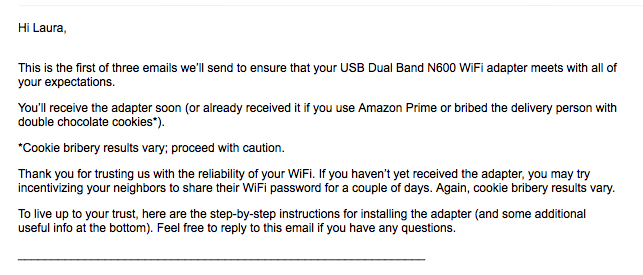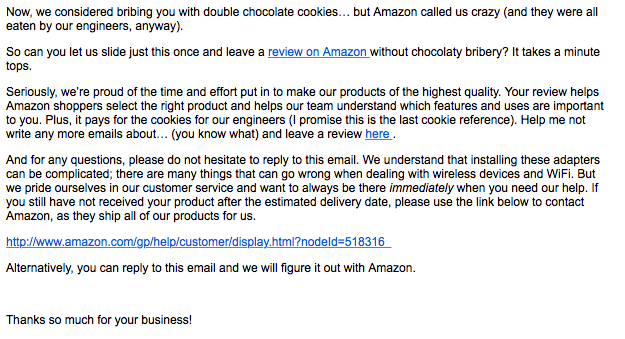 As is true generally with life, ironically the part of customer relationship management which is probably the most important, is also the part that’s most frequently overlooked by organizations.
As is true generally with life, ironically the part of customer relationship management which is probably the most important, is also the part that’s most frequently overlooked by organizations.
Onboarding.
Whether you are a product or a service business, that magic time after a customer has made a sale, yet before they either start using your product or working with you in an organized manner, often makes or breaks their entire experience.
No matter how great your product or amazing your service, if you muck up your onboarding, you’ll have a much larger moat to swim to achieve true customer satisfaction.
The old adage, “you only have on chance to make a great first impression” applies well here. While you *might* be able to mend the relationship later on, it will take a lot of work to rebuild that layer of trust.
Component of Successful Onboarding
Proactivity is the name of the game in onboarding. And that takes the shape of four basic components:
Set expectations
What can they expect from your work together (or your product)?
- How will things work?
- What’s the communication flow like?
- Where can they go for help?
- Where do they find out what to do?
- Who does what?
Most organizations cover these issues as part of the business development stage, so assume they don’t need to address them again in onboarding.
While that might be the case, there is a difference in the priorities and area of focus for a prospect vs. a customer.
Even if you covered all of this in prospecting, you need to do it again. And clearly.
Ease concerns or doubt
Anytime anyone starts something new, it’s scary.
They might have complete confidence in your product or service and be super excited about work with you, but where there is unknown, there is doubt.
Doubt is always an enemy to successful customer relationship management and customer satisfaction.
Provide a roadmap
What’s one of the best ways to ease doubt?
Help people understand where they are going, how they will get there, and how long it will take.
Do this with a clear, goal-focused roadmap everyone agrees to.
Establish the tone of the relationship
There are a lot of different types of good customer relationships.
Part of successful customer relationship management is setting that right dynamic between you and your customer.
There are very formal relationships, more casual ones, fun and personal relationships, and so on.
It’s important to set the tone from the beginning of what type of relationship you expect.
Of course, the customer controls part of this, but you need a starting point to launch from and adjust based on their responses.
This is also really where you look at your brand personality and how that applies to your organizational relationships.
Customer Relationship Management: A Case Study
I’ll get more actionable about each of the four components outlined above in a subsequent post.
Today I want to present a simple case study.
One that shows how a company instituted a few processes to proactively address common onboarding hurdles.
I love this example because it shows successful customer relationship management doesn’t have to be tedious, expensive, or time-consuming.
It just needs to be consistent, targeted, proactive, and customer-focused.
After my recent move, my WiFi came in spotty in my new office.
After much lamenting (aka whining) to the all-knowing Gini Dietrich about it, she suggested I get an adapter.
Off I went to Amazon to find an adapter.
The Great Gods of Online Shopping suggested one from Net-Dyn.
It got great reviews, was a good price, and Mac compatible — I got it.
The next day I received an email from Net-Dyn

Inside they provided me clear instructions, proactively answered many of my questions and concerns, and added a dose of fun.

The brand voice is actually what makes this email.
It changes the customer experience and makes them fun, relatable, and approachable.

Plus it’s unexpected.
I mean, I bought an adapter.
It’s not necessarily a fun, sexy purchase.
But now I know my adapter is guaranteed, even on Mars, so that changes everything.
They supply really comprehensive directions and then end with this.

This email should probably be in a textbook about successful customer relationship management.
(And clearly points to why they are the top-rated adapter on Amazon.)
Customer Relationship Management Requires Consistency
Now let me make this VERY clear (before you all yell at me): One email isn’t a customer relationship management strategy.
Even when it’s a really well done email that talks about cookies.
But it’s a good example of an effective process to proactively address a new customer’s concerns and set the tone of the on-going relationship.
It lowers possible start-up and implementation issues and lets me know right away that, should I have issues, they are very open to feedback and there to help.
It funnels my feedback to them, vs. possible rants to the jeering crowds of the internet (although those still will happen).
To continue this story, when I went to download the driver, I found they didn’t have one for my operating system.
I chatted with their Zen Desk operator who continued the experience the email had set.
He told me to return to Amazon and which one I needed to purchase instead.
My new adapter is on the way.
At this point, prior to product use, I’m a fan of the company.
My expectation is the product will be awesome, and so even if it just “works,” I’ll be a happy customer.
Customer relationship management starts at the very beginning of the relationship.
A process needs to be in place to make sure that beginning is a positive one.